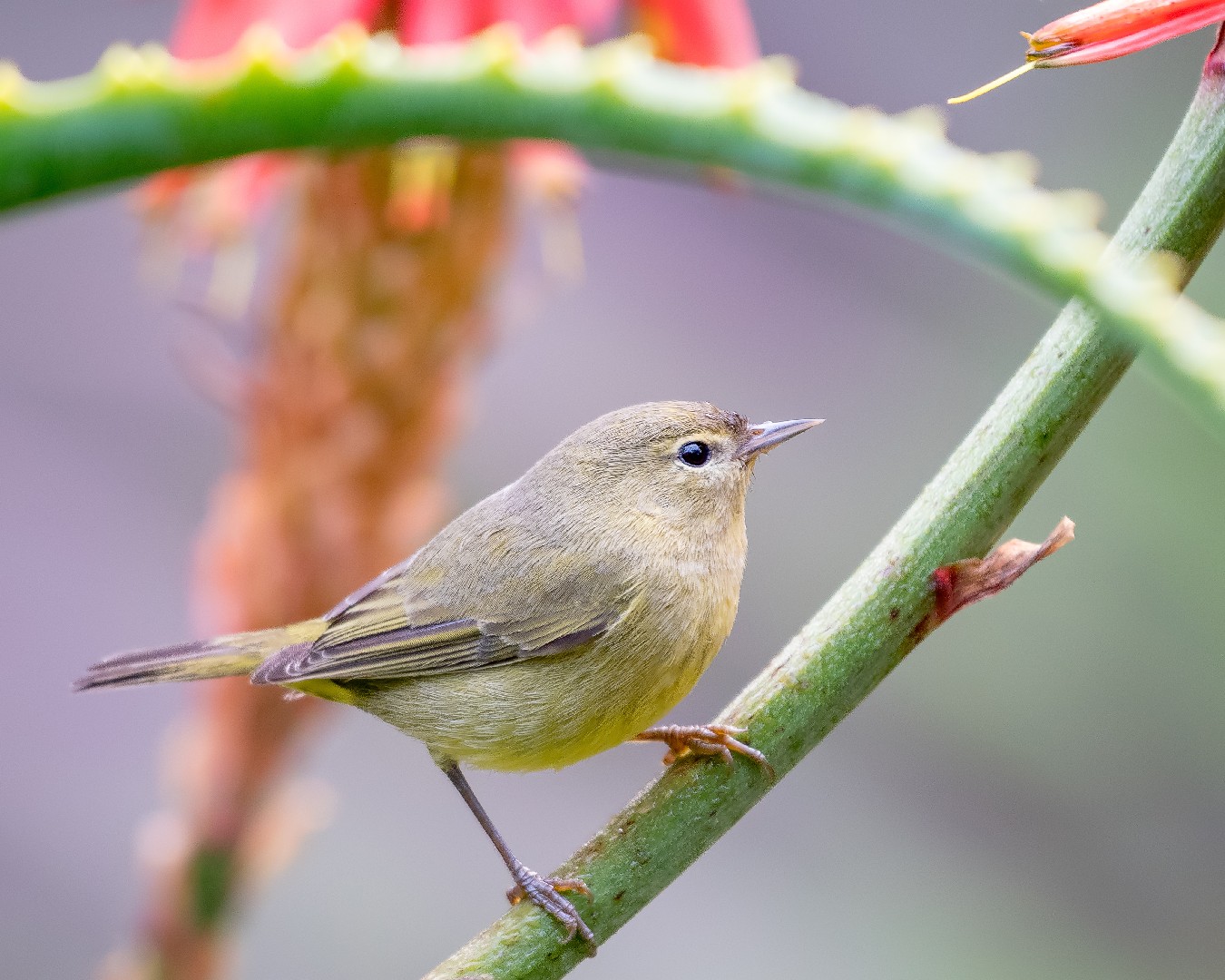Orange-crowned Warbler
A species of Leiothlypis Warblers Scientific name : Leiothlypis celata Genus : Leiothlypis Warblers
Orange-crowned Warbler, A species of Leiothlypis Warblers
Botanical name: Leiothlypis celata
Genus: Leiothlypis Warblers
Content
Description General Info
Description
The orange-crowned Warbler has a large range but is a rare sight. These birds stay in the coverage of low thickets and dense vegetation in shrubby ecosystems looking for insects and berries. The orange-crowned Warbler also nests on the ground, possibly to avoid other bird species that might commandeer or rob from a nest higher up in the trees.
Size
12 - 13 cm
Life Expectancy
6 years
Nest Placement
Ground
Clutch Size
3 - 6 eggs
Feeding Habits
Orange-crowned Warbler predominantly consume invertebrates like ants, beetles, spiders, flies, and caterpillars. They forage from ground to treetops, supplementing their diet with fruits, berries, seeds, and plant galls. They drink nectar, feed at sapsucker wells, and visit feeders with suet and peanut butter.
Habitat
Orange-crowned Warbler inhabit open woodlands, thriving between sea level and 7,500 feet, including chaparral, riparian thickets, and deciduous or mixed forests. Their habitats range from fir-aspen woodlands and temperate rainforests to altered landscapes like second growth forests. In winter, they settle in structurally similar environments like Mexico's pine-oak forests.
Nest Behavior
The female orange-crowned Warbler solely constructs the nest over 4 days, then lays eggs, lining the nest with fine grasses and hair. After egg-laying, both parents participate in feeding the young and defending the nest.
Nest Characteristics
Orange-crowned Warbler's nest is typically placed on/near the ground, hidden by vegetation on shady hillsides, or in low shrubs. The open cup-shaped nest measures about 4 inches across, 2.5 inches high, and is built from leaves, grass, bark, moss, and animal hair.
Dite type
Insectivorous
General Info
Feeding Habits
Bird food type
Bird Feeder Type

Ground

Small Hopper

Small Tube Feeder
Sounds
Song
Recording location: United States
Song
Recording location: United States
Song
Recording location: United States
Behavior
Orange-crowned Warbler exhibit agility and purpose in their movements, navigating through dense vegetation with rapidity to forage. Their diet consists primarily of insects, which they adeptly glean from an array of surfaces, including foliage, bark, and even mid-flight. During breeding season, males vocally establish and defend territories, later ceasing their calls as part of courtship rituals. Remarkably, these displays involve mimicry of female behaviors to woo mates. Post-courting, vocalizations resume. A distinct behavior is the male's crown feather display, revealing a bright orange patch to signify territorial aggression or threat responses. Orange-crowned Warbler are amicable toward sympatric avian species, often sharing habitat space. Their migration and wintering periods involve forming mixed-species flocks, enhancing their social ecology.
Scientific Classification
Phylum
Chordates Class
Birds Order
Perching birds Family
New world warblers Genus
Leiothlypis Warblers Species
Orange-crowned Warbler 